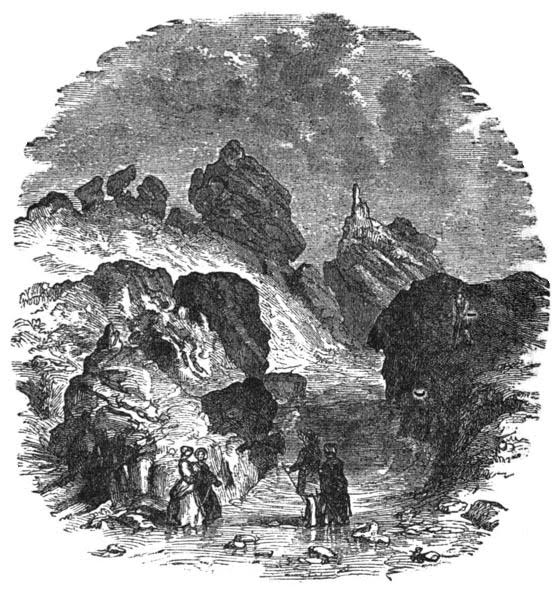Irish Legal Heritage: A death on Ireland’s Eye

Sir Cusack Patrick Roney, Illustration of the "Long Hole" on Ireland's Eye, where Sarah Kirwan's body was found
On the 6th of September 1852, William Bourke Kirwan took a boat to Ireland’s Eye, an island off the coast of Dublin, with his wife of twelve years, Sara Maria Louisa Kirwan. William was a professional artist and the couple regularly spent the day on the island where William would sketch, and Sara would bathe. On the day in question, the couple took a boat to the island at around ten o’clock and arranged for the boat to come back and collect them at eight o’clock. At around four o’clock, another couple offered the Kirwan’s a lift back to Howth, however they declined and were the only people left on the island until the boat came back for them.
Shortly before eight o’clock, several people in Howth heard a cry coming from the island and when the boat for the Kirwan’s arrived soon after, Mr Kirwan said he had been sketching the effects of the sunset on the mountain and had not seen his wife for a few hours.
After a “prolonged search” by Mr Kirwan and two boatmen, Mrs Kirwan’s body was found lying on a rock in an area of the island known as “Long Hole”.
An inquest returned the verdict of “found drowned”, and the doctor who examined Mrs Kirwan said there were no marks on the body to arrest his attention, no trace of violence. However, rumours spread of Mr Kirwan having murdered his wife. The rumours gained more traction after it was discovered that Mr Kirwan had seven or eight children with another woman, Maria Teresa Kenny, who he spent half of his week with. Despite claims that the two women knew of each other, the suspicion of Mr Kirwan’s involvement in his wife’s death was heightened by the rumours and he was eventually charged with her murder.
On the 9th of December 1852, huge crowds gathered in Dublin for Mr Kirwan’s trial. The prosecution’s case was that Mr Kirwan’s double life and secret family was a motive for the murder, and that he had intentionally drowned his wife. The defence argued that Mrs Kirwan may have had a fit of epilepsy caused by her “going into the water with a full stomach”, and that Mr Kirwan couldn’t have followed her into the water as only his feet were wet from trampling through the rain-soaked grass in search of his wife with the boatmen.
Despite protesting his innocence, the jury found Mr Kirwan guilty of murder. Judge Crampton sentenced him to death, damning Mr Kirwan for raising his hand “against a female, a hapless, unprotected female, who by the laws of God and man was entitled to your protection, even at the hazard of your life, and to your affectionate guardianship”. Judge Crampton continued, “In the solitude of that rocky island to which you brought her on the fatal 6th September under the veil of approaching night, when there was no hand to stay and no human eye to see your guilt, you perpetrated this terrible, this unnatural crime” (Matthias McDonnell Bodkin, Famous Irish Trials (Maunsel & Co 1918)).
A conviction which still divides opinion due to the lack of any evidence, Kirwan’s death sentence was commuted to penal servitude for life. It has been reported by some that that he served twenty-seven years on Spike Island and returned to the scene of his wife’s death after his release (Matthias McDonnell Bodkin, Famous Irish Trials (Maunsel & Co 1918)); whereas others report that he was sent to the convict establishment at Bermuda and went to live in America upon his release.









